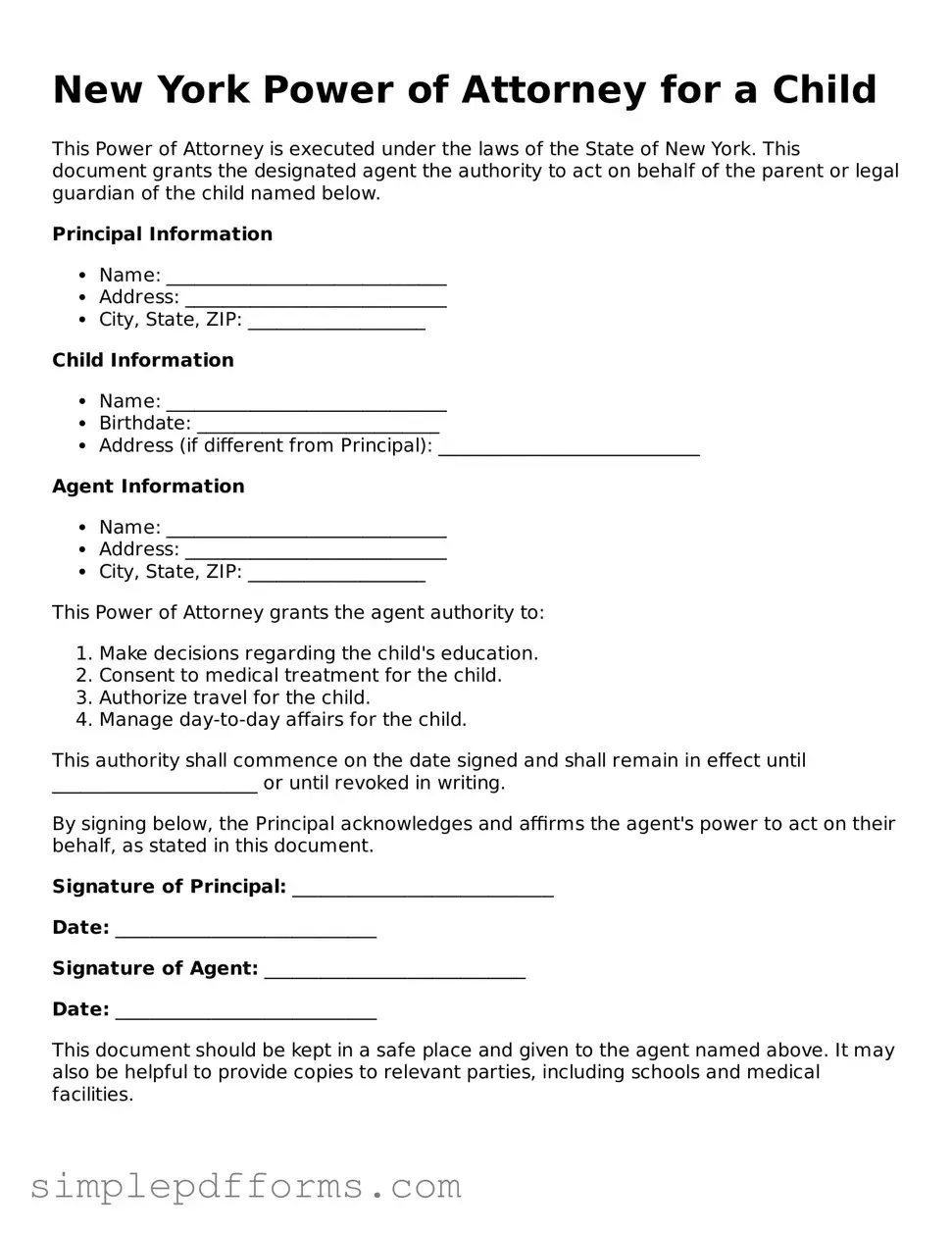New York Power of Attorney for a Child
This Power of Attorney is executed under the laws of the State of New York. This document grants the designated agent the authority to act on behalf of the parent or legal guardian of the child named below.
Principal Information
- Name: ______________________________
- Address: ____________________________
- City, State, ZIP: ___________________
Child Information
- Name: ______________________________
- Birthdate: __________________________
- Address (if different from Principal): ____________________________
Agent Information
- Name: ______________________________
- Address: ____________________________
- City, State, ZIP: ___________________
This Power of Attorney grants the agent authority to:
- Make decisions regarding the child's education.
- Consent to medical treatment for the child.
- Authorize travel for the child.
- Manage day-to-day affairs for the child.
This authority shall commence on the date signed and shall remain in effect until ______________________ or until revoked in writing.
By signing below, the Principal acknowledges and affirms the agent's power to act on their behalf, as stated in this document.
Signature of Principal: ____________________________
Date: ____________________________
Signature of Agent: ____________________________
Date: ____________________________
This document should be kept in a safe place and given to the agent named above. It may also be helpful to provide copies to relevant parties, including schools and medical facilities.
